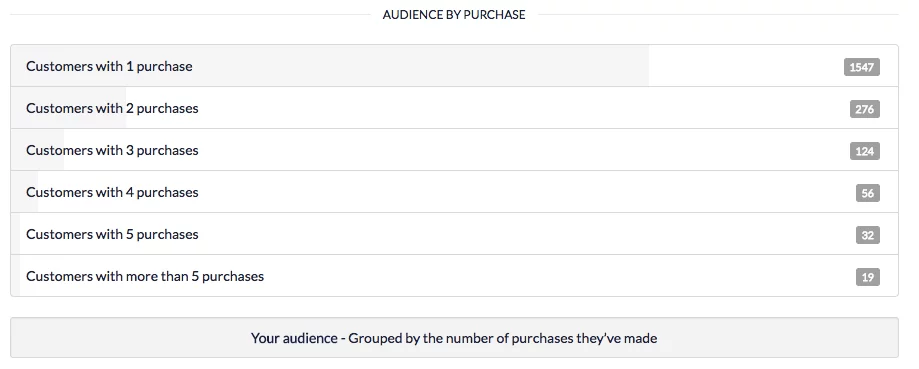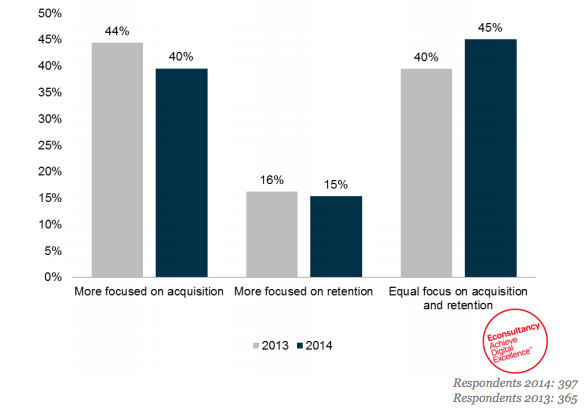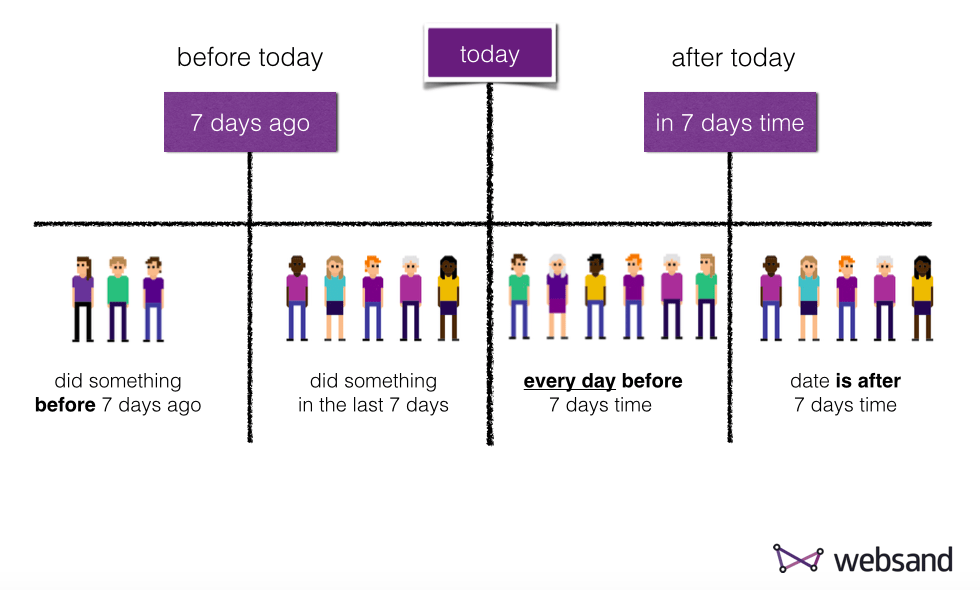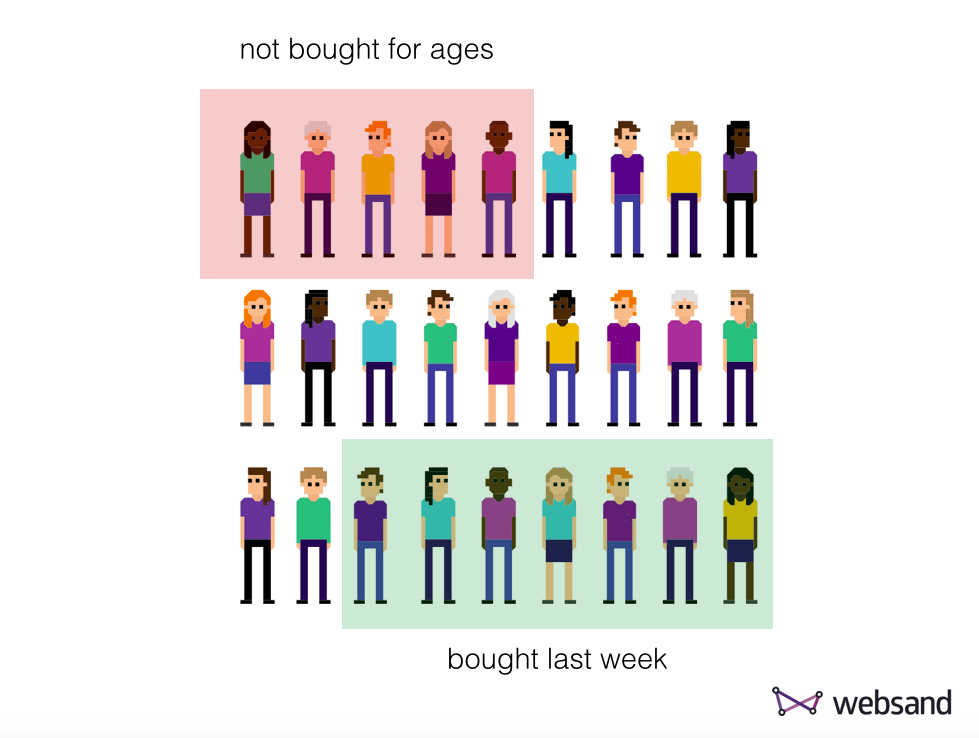How the transfer window can help you reduce customer churn
Why is an email marketing platform talking about football transfer windows? Decent question. The answer is, it’s a decent metafor to discuss how to reduce customer churn.
To explain, in our experience of working with e-commerce businesses, unlike the signing or selling of a footballer, it’s rare to see a new customer welcomed or leave with a fanfare of press coverage. People buying or people not buying from you anymore is simply part of doing business. Your transfer window is always open. Your customers are free to purchase wherever they want, whenever they want and with whoever they want.
That’s why we see a drop off of between 90% and 70% between those customers who only buy from you once and those that go on to purchase again.

That’s a huge amount of missed opportunity for businesses that aren’t focused on ways to reduce customer churn.
The majority of e-commerce businesses don’t know how to manage and recognise let along reduce customer churn.
They don’t know when the transfer window exists for their customers – is it between 40 and 80 days after purchase or is it some other point.
Understanding this data, can make a huge difference to your business growth and profit.
Creating more sales from existing customers is far cheaper, than the acquisition costs of finding new customers and converting them. So when you reduce customer churn, you tend to increase profit.
Any worthwhile business consultant will tell you if you want to manage the problem, you’ve got to measure the problem.
So in this post we’ll help you identify when your transfer window exists, and how you can reduce customer churn. And of course, we’ll be pushing email marketing as the best channel to communicate that message!
The business of football and the transfer window
Football is now big business, however it’s a business where the buying and selling can only take on specific times of the year. If you are a football club the pressure is on to retain your best players, but also to acquire better shiny new players. The transfer window is enforced seasonality within an entire industry.
The enforced seasonality was supposed to give football clubs stability and make things easier. Removing uncertainty for everyone by setting a ‘trading period’.
It does remove an element of uncertainty, however, it can also create lots of difficulties. Decisions become very time sensitive and as a result it can become a hugely pressurised situation.
Just look at the history of any football transfer window, everything seems to happen on the last day.
What can you learn from this?
Well, you might not have reporters and TV crews tracking your every deal or transaction. But if you have customers and you want to retain their business then I’d suggest that you have an active transfer window in your business every day, and your focus should be to reduce customer churn.
Understanding how your Transfer Window works
Whatever type of business you operate, you’ll have customers and you’ll be collecting customer data (in a GDPR compliant way of course).
Understanding this data is key to successful email marketing. After all if you have no data, you can send any emails.
Here’s some things to consider when putting a plan together for your email marketing to reduce customer churn.
When is a customer really a customer?
If we are looking for some value in our transfer window, and reduce customer churn, then the first question is ‘what is our ideal customer’
Is it someone who has spent with you more than once?
How often should they be buying from you?
What should they be buying?
These personas are often anecdotal or based on acquisition metrics from SEO and PPC rather than based on the actual profile of your best customers.
If you are a sales focused business spending all your effort and marketing budget on SEO and PPC, then you really need to answer these questions as you might be creating a ‘single purchase business’.
Based on the evidence we’ve collected from our clients, that approach is a very common one.

As the E-consultancy cross channel marketing report (from a few years back) shows, more marketing focuses on acquisition rather than retention. A more balanced approach will improve your results and reduce customer churn.
If you are a sales focused business spending all your effort and marketing budget on SEO and PPC, then you really need to answer these questions as you might be creating a ‘single purchase business’.
Based on drop off of 90% -70% from one purchase to more than one purchase, and the e-commerce report it’s clear that not enough attention is applied on marketing tactics to reduce customer churn.
A rule take a data driven approach but follow the money, so focus on your existing customers and use that insight to generate more business.
RFS reporting (recency, frequency, spend)
For existing customers, you know how to contact them, you know who they are and you know what they have bought.
Recency, Frequency, Spend reporting is a structure to allow you to group customers based on their spend activity.
Recency – When did they buy something
Frequency – How often have they bought something
Spend – How much have they spent.
Reviewing this data based on the individual behaviour of the companies you deal with makes it easy to identify and therefore communicate with – those companies who you believe add most value to your business. The customers you want to, and need to retain.
Product Lifecycle
Another key component to review when looking at ways to reduce customer churn is the structure of your offer. What is your product lifecycle?
If a company bought your product or service how long would it last? Your product lifecycle is a great indicator to understanding your own transfer window. When you are able to link your customer behaviour with the lifecycle of the product or service they’ve purchased you can unlock huge potential for growth.
For example, let’s say you are selling business cards, I’d suggest the following approach to reduce customer churn.
Look at the purchase behaviour of those people that have made a repeat purchase (do they buy the same thing, related products, or random things?)
Look at how often it takes people to make a repeat purchase
Create a marketing message to sell the next batch of business cards at the time I think they are ready to buy.
Using your transfer window to reduce customer churn
The transfer window focus for this post is about retaining your customers and reducing customer churn.
This is hugely important, as a 5% increase in the number of customers you retain can increase your profits by between 25%-95% (Bain and Co) and the lost value of a customer is on average $243 (KissMetrics)
The good news is these people know who you are, so they are easier to sell to.
The probability of selling to an existing customer is 60 – 70%. The probability of selling to a new prospect is 5-20% (Marketing Metrics)
And, the best bit is. Unlike the sales process of finding new customers, you already know who these customers are, where they live, how to contact them and what they have bought!
What transfer window best fits your business
How the transfer window affects your business depends on the type of business you operate. Which transfer window fits your business?
A subscription business model
A business to business model.
A seasonal business model
or a business to consumer model.
The subscription business transfer window
Running a business that operates a service or product delivery using a subscription model is becoming increasing popular.
At Websand, we operates this model, our customers pay monthly to access our marketing automation software and support.
If you run a subscription model one if the huge benefits is that you have a ‘contract’ with each customer.
This forces you to measure and manage customer churn (customer retention) as part of your marketing and regular business operation.
You understand that the business process is
A – acquire a new customer
B – collect a payment from the customer
C – retain (repeat step B on a monthly basis)
If your customer doesn’t pay on month 2 then it’s easy for you to identify that they are no longer a customer and you can then contact them to do something about it.
Find out what the problem is – call them / send them a survey
Or…give them a ‘come back’ offer
How to deal with the complexity of a subscription business
The issue of managing a subscription business is the volume of customers and complexity of managing the subscription cycle.
With a subscription business this can mean that you have 365 different subscription cycles in place at any time, and if these are against different products or services then that is more complexity to manage.
Adopting marketing automation and a data driven marketing process can manage this for you. Marketing automation will allow you to create the mechanisms to handle each subscription process based on the individual circumstances of each customer and the product or service they have bought.
Within Websand, we call this date driven marketing.

The business to business transfer window
Imagine if businesses were restricted by a real life transfer window. A time period where everyone had to decide from whom they were going to buy goods and services from. Once committed they would need to continue to buy from them for a fixed period of time.
The transfer window – Tender process
This actually happens quite a lot in business to business transactions at a corporate level, it’s called a tender process.
The transfer window – Working under contract
If you are under contract then you can operate as a subscription business – that is a more formal transfer window situation and a sure fire way to reduce customer churn.
You have a customer end date. A date on which is your contract will end. From that point you can manage your marketing and customer support activity to make sure that when the customer has to make a decision on the next contract, it’s a pretty easy decision for them to retain your services.
The transfer window for seasonal businesses
If you are running a seasonal business, then you have times during the year that your products or services are more likely to be sold.
If you sell ice cream, then you are more likely to sell this in the summer than in the winter and your business will be built around this ‘known’ fact of business.
This doesn’t mean that you don’t have opportunities to smooth out the seasonality within your business. Your customer’s could well have something interests that fit with another product or service in the ‘non’ ice cream months.
Doing some research through partner offers with other businesses could open new opportunities for your business.
For example, customers that love ice cream in the summer, might love cakes in the winter?
The business to consumer transfer window
Imagine if the spending activity of normal people was restricted by a transfer window. Everyone had to decide who they were going to buy goods and services from and then they would need to continue to buy from them for a fixed period of time.
It would completely change the dynamics and way you run your business.
Unfortunately your customers don’t hand in a transfer request.
They just go off and buy from someone else.
But you can change that.
As with the ‘normal transfer window for B2B businesses’ Here’s some things to consider.
When is a customer really a customer?
If we are looking for some value in our transfer window, then the first question is ‘what is our ideal customer’
- Is it someone who has spent with you more than once?
- How often should they be buying from you?
- What should they be buying?
That gives you the ‘blueprint’ for the next step. Finding the customers that really add value.
RFS reporting (recency, frequency, spend)
For existing customers, you know how to contact them, you know who they are and you know what they have bought.
Recency, Frequency, Spend reporting is a structure to allow you to group customers based on their spend activity.
Recency – When did they buy something
Frequency – How often have they bought something
Spend – How much have they spent.

Create customer groups based on individual behaviour of your customers and make it easy to identify and therefore communicate with – those customers who you believe add most value to your business.
Product Lifecycle
If I bought your product or service how long would it last?
Your product lifecycle is a great indicator to creating your own transfer window.
For example, let’s say you are selling shoes, I’d adopt this approach.
- Look at how often it takes people to make a repeat purchase.
- Look at it again based on what they have bought previously.
- Create a marketing message to sell the next pair of shoes at the time I think they are ready to buy.
- Test if I get the timing right…
- Once I do get the timing right, put a marketing automation process in place (obviously I’d be using Websand to do all of this).
- Count the extra sales.
- Do this again to another product or service within my business offering.
Reap the rewards
Product lifecycles and value based customer segmentation are something businesses rarely consider. Based on our research, only 1 in 5 of new customers go on to purchase again. The main reason is businesses focus on growth from new customers rather than new custom.
A little bit of customer focus on the based on the value they’ve generated and you’ll reap the rewards.
Manage the transfer window in your business
Understanding more about your customers can make a huge difference to the bottom line of your business. According to Harvard Business Review, an increase of just 5% in customer retention can improve profits between 25% and 95%. Based on that research, why wouldn’t you invest in that?
The transfer window examples we’ve described hopefully give you some ideas of how you can understanding more about your existing customers and try out some ideas to reduce customer churn.
We love helping ecommerce businesses retain their best customers and find the best new signings.
So if you are looking for a new agent for your #emailmarketing, or not sure where to start to get your #marketingautomation into action. We can help and the transfer fee is more affordable than you think.
If you want to improve your marketing performance, complete the form below to arrange a chat or sign up for a free 14 day trial.
It’s time to start getting more from your email marketing
Sign up for a free Websand demo and let’s show you how to get the best from your email marketing.
